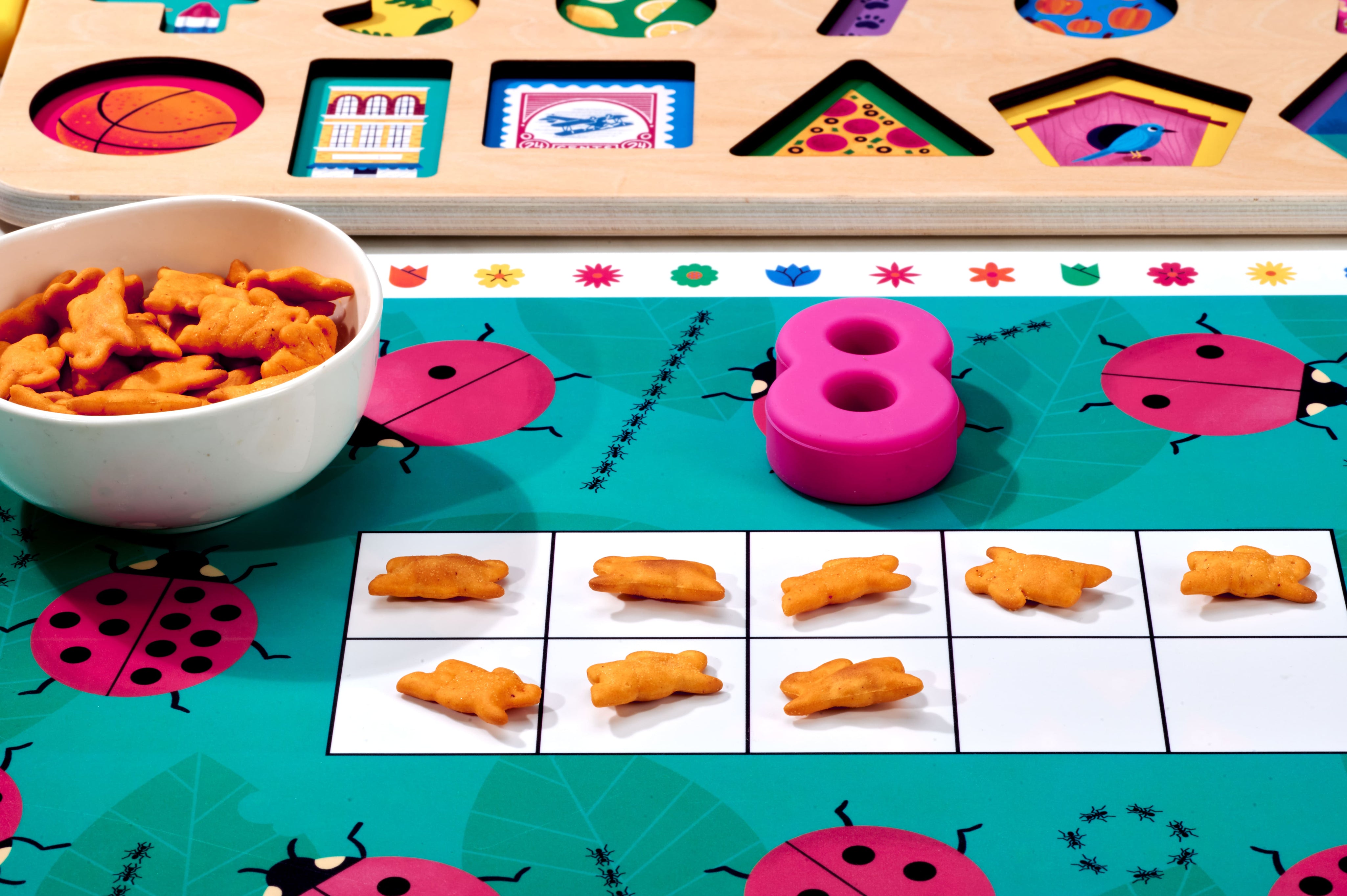Making Sense of Ten Frames

Written by Cali @chasing50toes
One of the most powerful tools we’ve used for early math is the ten frame. It’s a simple grid of two rows of five boxes that helps children see numbers as combinations of smaller numbers—and it’s something we’ve intentionally embedded across many of our D&J products.
You’ll find ten frames on our D&J Numbers Placemat, the Math Basics 1 Placemat, and a double ten frame on the Math Basics 2 Placemat for extending into teen numbers. And because we think ten frames are such a foundational tool, each of our scene placemats—Farm, Under the Sea, Scenic Safari, and Walk in the Woods—also comes with a printable ten frame you can use at home.
We use ten frames daily during snack time or playtime. I might hand my kids a pile of counting chips or a handful of grapes and say,
“Can you show me 6 on the ten frame?” That’s when they start to see that 6 is 5 and 1 more. Or that 7 is 3 away from 10. These visual models stick—and they’re key to building part-part-whole thinking, which supports everything from mental math to regrouping and fractions later on.
For subtraction, we might start with a full frame and remove pieces together.
“There were 9 chips—if I eat 3, how many are left?” They watch the pieces disappear and see the answer unfold.


The scene placemats let you tie in storytelling with math. For example, on the Farm mat, you might ask:
“How many cows are in the barn?” and then place that number of chips in the ten frame. “How many more cows do we need to make a group of 10?” It’s casual math talk with real meaning—and it opens the door to math being a part of every day.
If you're using the Math Basics 1 Placemat, flip it over to find a ten frame on the back. It pairs perfectly with the colorful trim. You can ask:
"How many orange flowers are there?" Count them together, recreate the count on the ten frame with chips, and then mark the total on the number line.
We also love using the ladybug images to explore part-part-whole relationships. For example:
“If one wing has 4 spots and the other has 3, how many spots in all?” Move 4 chips into one row of the ten frame, and 3 into the other, and suddenly 7 becomes something your child can see.
Once your child is confidently filling a ten frame, it’s time to level up. The Math Basics 2 Placemat introduces double ten frames, which let your child explore numbers above 10 using a visual breakdown:
“12 is 10 and 2 more.” They’ll begin to understand teen numbers not as isolated memorized figures, but as composed quantities—an essential step toward place value and addition fluency.
Ten frames are simple but so powerful. They’re not just about counting—they’re about understanding how numbers fit together. And when kids can see those relationships, math becomes less about memorization and more about meaning.

